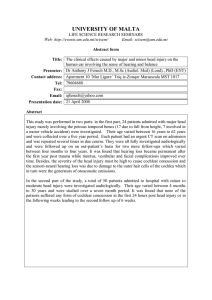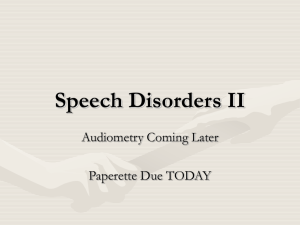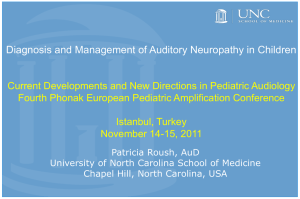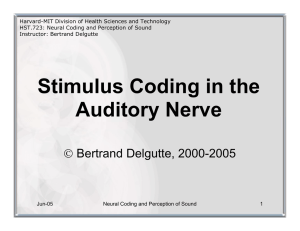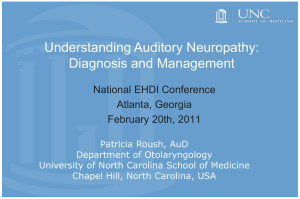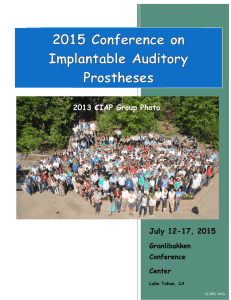Harvard-MIT Division of Health Sciences and Technology
advertisement
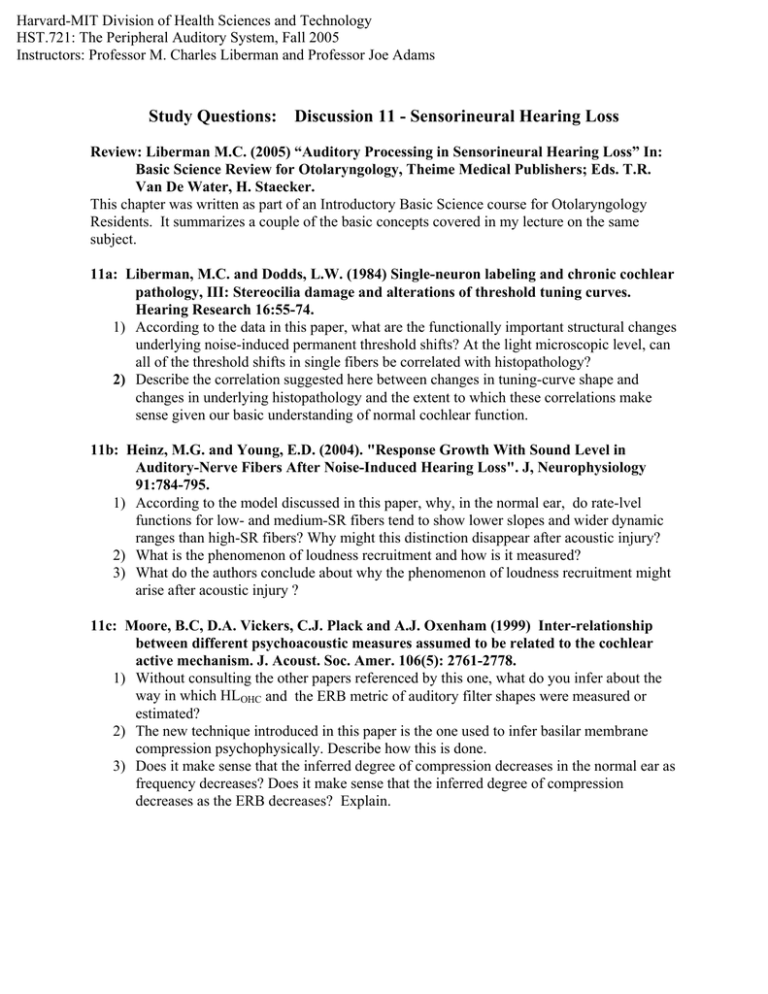
Harvard-MIT Division of Health Sciences and Technology HST.721: The Peripheral Auditory System, Fall 2005 Instructors: Professor M. Charles Liberman and Professor Joe Adams Study Questions: Discussion 11 - Sensorineural Hearing Loss Review: Liberman M.C. (2005) “Auditory Processing in Sensorineural Hearing Loss” In: Basic Science Review for Otolaryngology, Theime Medical Publishers; Eds. T.R. Van De Water, H. Staecker. This chapter was written as part of an Introductory Basic Science course for Otolaryngology Residents. It summarizes a couple of the basic concepts covered in my lecture on the same subject. 11a: Liberman, M.C. and Dodds, L.W. (1984) Single-neuron labeling and chronic cochlear pathology, III: Stereocilia damage and alterations of threshold tuning curves. Hearing Research 16:55-74. 1) According to the data in this paper, what are the functionally important structural changes underlying noise-induced permanent threshold shifts? At the light microscopic level, can all of the threshold shifts in single fibers be correlated with histopathology? 2) Describe the correlation suggested here between changes in tuning-curve shape and changes in underlying histopathology and the extent to which these correlations make sense given our basic understanding of normal cochlear function. 11b: Heinz, M.G. and Young, E.D. (2004). "Response Growth With Sound Level in Auditory-Nerve Fibers After Noise-Induced Hearing Loss". J, Neurophysiology 91:784-795. 1) According to the model discussed in this paper, why, in the normal ear, do rate-lvel functions for low- and medium-SR fibers tend to show lower slopes and wider dynamic ranges than high-SR fibers? Why might this distinction disappear after acoustic injury? 2) What is the phenomenon of loudness recruitment and how is it measured? 3) What do the authors conclude about why the phenomenon of loudness recruitment might arise after acoustic injury ? 11c: Moore, B.C, D.A. Vickers, C.J. Plack and A.J. Oxenham (1999) Inter-relationship between different psychoacoustic measures assumed to be related to the cochlear active mechanism. J. Acoust. Soc. Amer. 106(5): 2761-2778. 1) Without consulting the other papers referenced by this one, what do you infer about the way in which HLOHC and the ERB metric of auditory filter shapes were measured or estimated? 2) The new technique introduced in this paper is the one used to infer basilar membrane compression psychophysically. Describe how this is done. 3) Does it make sense that the inferred degree of compression decreases in the normal ear as frequency decreases? Does it make sense that the inferred degree of compression decreases as the ERB decreases? Explain.


